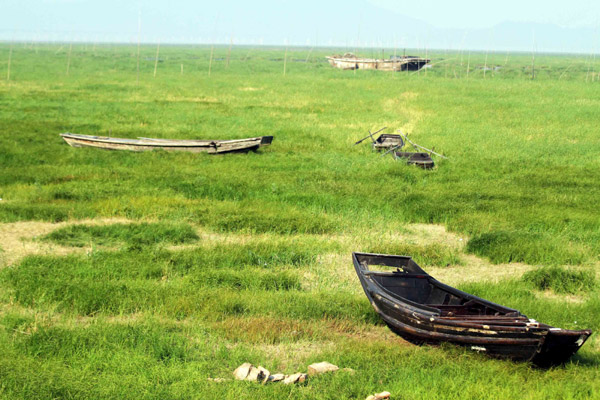Drought affects nearly 35 mln, no end in sight
A severe drought has affected some 34.83 million people in five provinces along the middle and lower reaches of the Yangtze River and China initiated a emergency response plan Sunday?to cope with the drought in the worst-hit area.
 |
|
Fishing boats are stranded on grassland, which was once the bed of Poyang Lake — China's largest fresh water lake, in Jiujiang, East China's Jiangxi province, on Saturday. Because of a severe drought, the area of Poyang Lake has shrunken to less than half its usual size. |
This year's precipitation has been about 40 percent to 60 percent less than previous year in Jiangsu, Anhui, Jiangxi, Hubei and Hunan provinces. Four China's largest fresh water lakes located in the great region have been also affected,?which are?drying up dramatically.
According to a statement jointly issued by the National Commission for Disaster Reduction (NCDR) and the Ministry of Civil Affairs (MOCA), as part of the emergency response program the two departments had sent a working group to Jiangxi province to inspect the situation and assist ongoing disaster relief efforts.
The drought, caused by unusually low rainfall and insufficient flow from the upper reaches of the Yangtze River, also led to an direct economic loss of 14.94 billion yuan ($2.29 billion), according to the MOCA.
Forecasters say there is no prospect of rain in the next few days.
Soaring vegetable prices amid China's worst drought in half a century have also triggered worries that inflation will climb to a new high in May.
Vegetable prices rose nearly 19 percent from May 23 to May 27, according to figures from the Baishazhou Market in Wuhan, capital of drought-hit Hubei in Central China.
The central government has allocated 1.96 billion yuan to drought relief and to subsidize the loss this year, according to Zhang Xu, deputy director of the Office of State Flood Control and Drought Relief Headquarters.
 0
0 






